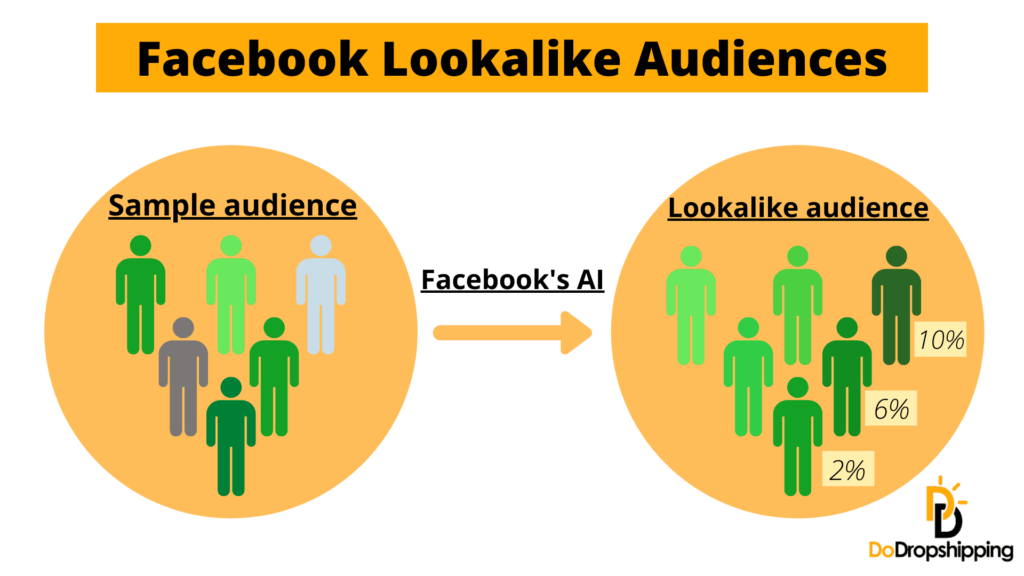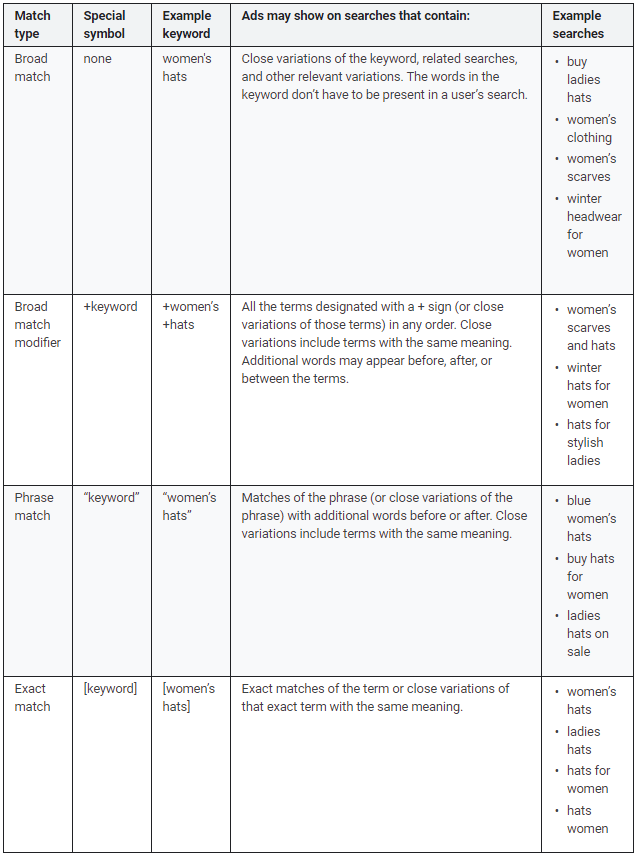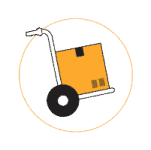Many people will want to jump into a dropshipping business, but they may not know the difference between several marketing strategies and how to promote their products.
It can be overwhelming.
Fortunately, there is a variety of marketing methods that you can use for your dropshipping store.
This article will cover these options so that you can find the right one for your business goals.
From search engine optimization to social media marketing, we will break down each marketing method's pros and cons and highlight which approach is best for which business.
Read on to learn how to pick the right method of marketing for your own dropshipping company!
Why marketing matters for your dropshipping business
Let me ask you a question, why did you start with a dropshipping business?
The primary goal is to earn some money, right?
Well, to earn money with a dropshipping business, you need sales.
But sales don't appear out of nowhere. You have to put in work to get them.
Only when several aspects of your dropshipping business are in place, the equation will be complete, and you will start getting sales.
One of these aspects is marketing.

Because dropshipping is an ecommerce business, the customer must be able to find you. And that's where marketing comes into play.
Some people think that just having a website is enough to make them discoverable.
If you think that's true, take a look at the following statistics and see if it changes your mind:
There are 12-24 million online stores in the world, but only around 650,000 of them generate more than $1,000 in annual sales.
Source
It goes to show that websites that don't do any marketing, are not mobile-friendly, or lack things like the standard ecommerce store pages will not get a considerable amount of sales.
If you want to build a strong brand and a community, marketing is crucial!
How do you prepare to pick the best advertising method for your dropshipping store?
When it comes to marketing, it's important to resonate with your potential customers and convince them that they want to purchase your products.
In recent years, the internet has made marketing much easier for ecommerce stores.
You can now advertise your products on social media platforms like Facebook, Instagram, Pinterest or using email marketing through newsletters and push notifications. And there are so many more marketing methods out there!
However, not all marketing methods are equal, and what works for one business may not work for another.
So, to pick the advertising method that will work the best for your new ecommerce store, you will have to do some preparation.
Before picking an advertisement method for your new online store, it is best if you know the following information for your store:
- In which niche will you be operating? (Check out 25 niche ideas here!)
- What product(s) will you be selling? (Take a look at 13 product examples here!)
- What audience will you be targeting? (Check out how to develop a buyer persona here!)
By keeping these things in the back of your mind while reading about the pros and cons of each marketing method later in the article, you will have a much easier time picking an advertising method to start with!

7 Advertisement methods to market your dropshipping store as a beginner
You have probably come to the realization that there are many possibilities of advertising your ecommerce store online.
But with so many options available, how do you decide which one will be the best to start with for your business?
In an increasingly competitive market, it's important to know your options and how they differ.
This section of the article will outline the different marketing strategies, highlight the pros and cons, and help you pick the right one for your company.
If you're looking for an easy-to-understand infographic on how to pick the right marketing method for your dropshipping store, check this out here:

But that's, of course, not all that there's to know – let's go more in-depth now!
1. Facebook Ads

Most dropshipping companies will have a Facebook page. However, you’ll need to do more than that to get sales.
If you want to sell your products, you need to promote them too.
This is where Facebook Ads come in.
Facebook Ads are paid online advertisements that are displayed on various social media platforms like Facebook, Instagram, and Facebook Messenger.
Let's take a look at their pros and cons!
Pros of Facebook Ads
Advertise on multiple platforms
When hearing the name Facebook Ads, it makes sense to think it's an advertisement platform for placing ads on Facebook.
While that's true, don't forget that you can also place your ads on other platforms such as Instagram or Messenger.

Benefit from a couple of amazing features for online marketing
In recent years, Facebook has developed some amazing features for the Facebook Ads platform.
They do this to help you advertise on their platform profitable. If you make money, you will spend more money on ads, and Facebook will make more money as well!
One amazing feature of Facebook Ads is their artificial intelligence. This is a feature that does several things, but among others, it allows you to choose a marketing objective at the start of your campaign.
You should also try using Facebook's retargeting features, which are great. For example, you can make tailored ads specifically for people who added your product to their cart but didn’t initiate checkout or purchase yet.
Last but not least, don't forget to learn about Lookalike Audiences. These are audiences created by Facebook that are likely to react similarly to your sample audience!

Amazing targeting possibilities
Did you know that Facebook collects up to 52.000 data points from each user?
Because of this, targeting a really specific audience is a piece of cake with Facebook Ads.
If you know your target audience, you can target them! (And if you don’t know them, you can check out this article here to learn how to find them via Facebook Ads)
Cons of Facebook Ads
It takes some time to get used to and learn
While the Facebook Ad Manager is awesome to analyze your ad results once you know how it works, it can seem pretty complicated if you’re a beginner.

If you are new to Facebook Ads, you can check out our beginner's guide here!
Relies mostly on impulse purchases
Most people use Facebook Ads to advertise on Facebook or Instagram.
However, when people are scrolling through the Facebook or Instagram feed, they often don't have the intention to buy anything.
Therefore, Facebook Ads is most effective if you are selling products that either solve a common problem or have a “wow-factor” which makes people think, “wow, that's so cool, I'm going to order one!”.

It's easy to get banned from the platform if you break the rules
Just like Paypal, Facebook can ban your Ad Manager account for no apparent reason.
So, make sure to read about Facebook's advertising policy before starting to use the platform!

Should you use Facebook Ads?
In my opinion, Facebook Ads is a great first advertisement platform for new online store owners, especially if you sell a product that solves a problem or has a “wow-factor”.
However, it won't be the best choice for all types of ecommerce stores.
For instance, if you sell a product that doesn't really get bought by someone who isn't explicitly looking for it (for example, a light bulb), you may have more success with the advertisement method I will cover next, Google Ads!
If you still doubt whether or not to use Facebook Ads, take a look at this article here.
2. Google Ads

Google Ads (previously known as Google Adwords) is an advertisement platform developed by Google, where advertisers can bid to display ads, product listings, or videos to online users.
By using Google Ads, you essentially pay Google to put your website at the top of the search results.
And of course, this leads to extra sales because a higher ranking on the results page means more clicks!
Pros of Google Ads
Target engaged shoppers
Google Ads is great for bringing engaged shoppers onto your product page.
Considering people who have clicked on your Google ad were already actively searching for the product, the likelihood of them purchasing it increases, which makes a high return-on-investment possible.

Great analytics and plug-and-play integration
One of the pros of Google Ads is that it seamlessly connects with Google Analytics, a tool that lets you analyze your site's traffic.
Google Ads can track conversions via this tool and use this data to increase your conversions by deciding who will see your ad.

Only pay for the clicks
Google Ads is a Pay Per Click (PPC) advertisement platform, meaning you will only have to pay when someone clicks on your link.
This way, you are guaranteed to get some traffic on your product page!
Cons of Google Ads
Unfortunately, there's also a drawback that comes with using the PPC method.
If you are not careful, your search term can fall into unrelated search queries, and you will pay for a click that would never convert.
For example, if you don't define the strictness of the keyword “women's hats”, your ad may be shown to people searching for “women's pants” or “men's hats”. Here is an example from Google:

Not the cheapest
Compared to Facebook Ads, Google Ads may be a bit more expensive to advertise with.
However, Google Ads does come with the benefit of paying only for the clicks, which gives you great control over your spending.
Should you use Google Ads?
Google Ads is a great platform that offers a pretty low barrier of entry, even for brand-new businesses.
It can provide you with automation for limitless scalability and endless data to help you make well-informed decisions.
If you are in doubt about the use of Google Ads, I recommend taking a look at your product.
Do you sell a product that people buy impulsively, or would you really benefit from targeting engaged shoppers?
If you sell products like calculators, light bulbs, or backpacks and you think it's better to show them to engaged shoppers, you should definitely give Google Ads a try!
And if you are still doubting, just check out our article that goes over this exact question; should you use Google Ads for dropshipping?
3. Influencer marketing

Influencer marketing is another popular method for beginners to advertise their dropshipping store.
The strategy involves hiring people who are well-known and respected in their industry to endorse your product, which often happens on Instagram.
Some people think that this type of marketing is just for well-known companies and brands, but the truth is that influencer marketing can work for any business, no matter how big or small it is.
So, should you use influencer marketing for marketing your dropshipping store?
Well, let's find out by looking at the pros and cons!
Pros of Influencer marketing
Great for low budgets
Influencer marketing is great for low budgets.
By negotiating a good rate from a smaller influencer, your product can be seen by thousands of people for just $10 or less.
When comparing this to a method like Facebook Ads, where you will often have to spend a couple of hundred dollars before really starting to become profitable, this is a genuine benefit of influencer marketing.

Due to these low shoutout rates, it is very likely that the price you pay per impression will be lower for influencer marketing compared to a method like Facebook Ads or Google Ads.
Awesome, right?
A higher trust factor
Another benefit of using influencer marketing is that you are able to leverage the trust of your influencer's followers.
Whenever people see a paid ad on Facebook or Instagram which they’ve never seen before, they might be somewhat skeptical at first.
However, when that same ad is posted by someone who they have been following for months in the form of a shoutout, they are much more likely to believe that it’s indeed a great product!

Lastly, it's possible to increase your brand's social proof by using influencer marketing.
When your product gets promoted by many popular influencers, people are more likely to trust you.
For example, if you see a product being promoted by Kim Kardashian, your trust for that business will increase, right?
Cons of Influencer marketing
Influencers may have fake engagement
Sadly, many influencers today buy fake followers, likes, or comments to make it look like they are popular and increase the rates they can ask for shoutouts.
Most people lose money when purchasing shoutouts from these “fake influencers” since many of their followers will be fake.
So, you will first need to check for fake followers for every influencer you might want to work with. If you’re interested in learning more about checking an influencer for fake followers, then I suggest reading this article here.

Challenging to measure results
A drawback of using influencer marketing is that it's difficult to measure metrics like Reach, CTR, CPM, Conversions, and more.
To do this, you will have to ask the influencer for their metrics, set up analyzing tools, and possibly set up different links to your store to be able to see which visitors came from which shoutout.

Should you use Influencer marketing?
Influencer marketing requires constant negotiating with influencers, setting up new shoutouts, and thinking about your next step to remain getting sales.
Due to this and the method's cheap impressions, Influencer marketing is an amazing advertisement method for new store owners that have a small marketing budget and lots of time on their hands.
However, if you would prefer a method that may be slightly more expensive but easier to automate and scale with a click of a button, you may want to look into Facebook Ads or Google Ads!
If you want to know more about the pros and cons of (Instagram) influencer marketing, then check out this article!
4. TikTok

TikTok is a social media app that allows users to create and share short videos.
On TikTok, you will find videos for all kinds of topics. Many videos are related to music, as TikTok offers creators a vast catalog of sound effects, filters, and music snippets. However, you will also find videos about topics like comedy, DIY, or fun facts.
There are three main ways of advertising products on TikTok. Each of them is pretty similar to other marketing methods featured in this article, being Facebook Ads, influencer marketing, and starting a theme page on a social media platform like Instagram or Pinterest.
Let's take a look at the pros and cons of using TikTok in your marketing strategy!
Pros of TikTok
It offers multiple ways of advertising your store
As mentioned before, TikTok allows you to advertise your products in three main ways.
The first option is using TikTok Ads, which is a marketing method that resembles Facebook Ads. The main difference is that you will be advertising on the TikTok platform!

As you can see, it looks a lot like creating a new ad campaign using Facebook Ads.
The second option is marketing your products using TikTok influencers, which will be similar to using influencers on a platform like Instagram.
TikTok influencers are accounts on TikTok with a large following. Because of the influencers’ authority and reach, they can show your products to their followers in an effort to generate sales for you.

The final method of advertising your products on TikTok involves creating your business’s own TikTok account and posting content on it.
That way, you will sort off become an influencer on TikTok yourself!
By consistently posting content around your niches and products, you will get more and more followers. As time goes on, you can keep them engaged by organizing things like giveaways and contests!

Advertising on TikTok is relatively cheap
It doesn't matter which TikTok advertising method you will end up using. For each one of them, the costs will be relatively low!
For example, TikTok Ads are cheaper to use than Facebook Ads.
A study by JungleTopp found this as well after spending roughly $20k on TikTok Ads and over $31k on Facebook Ads.
The results are summarized in the image below. Even though JungleTopp spent significantly more money on Facebook Ads, they got more than double the impressions on TikTok and almost twice the clicks!
Also, since it is generally easier to create a large following on TikTok compared to Instagram, TikTok influencers are likely to be cheaper than Instagram influencers. Using TikTok influencers, you could expose your product to thousands of people for just $10 or less.
Last but not least, creating your own TikTok theme page will allow you to direct traffic to your store for free!
Cons of TikTok
Less suited for older audiences
Some people believe that TikTok is dominated by people younger than 18. In reality, it's not that bad, as 75% of US TikTok users are aged 20 or older.
However, if your main target audience is aged 40+ or even 50+, you might have trouble reaching them through TikTok. This is especially true if you use anything other than TikTok Ads since they allow you to choose an age group to target.

Typically a lower conversion
The second con of using TikTok as a marketing method is that you are likely to see a lower conversion from TikTok traffic when compared to other sources.
Since TikTok offers an endless stream of content, most users aren’t motivated to click on links that will let them exit the platform. And if they do click through, the engagement is typically low.
Related article: Did you know that Shopify has a free link in bio tool designed for commerce called Linkpop? Check out these 12 Linkpop landing page examples here!
In the end, this is the drawback that comes with the benefit of cheaper impressions. To conclude, TikTok allows you to display your ad to more people for the same price, but it's common to see that fewer of them will make a purchase on your store.
Should you use TikTok?
Advertising on TikTok will work best for dropshipping businesses that want to target a relatively young audience. Also, it works best if you have a product video ad that fits the platform.
If your product video ad is likable, funny, interesting to watch, or has the potential to get shared a lot and go viral, chances are you will do well on TikTok.
Your ads have to be exciting for people on TikTok to watch them!
So, if you are selling a rather “boring” product and targeting older people, such as a lumbar support piece for a desk chair, you may want to try marketing it on Facebook Ads or Google Ads instead.
If you are interested in learning more about advertising with TikTok, check out our TikTok beginner's guide here!
5. Pinterest

Let's continue with an advertisement method that may be underrated by many people, Pinterest.
There are two ways to advertise your dropshipping store on Pinterest.
First of all, you can create paid ads where you pay per impression, just like with Facebook Ads.
Secondly, you can post content on the platform to expose your brand organically. With the right strategies and consistent posting, reaching hundreds of thousands of monthly impressions isn't unrealistic!
So, let's get into the pros and cons of using Pinterest as an advertisement method:
Pros of Pinterest
Reach audiences with a high buying intent
Before starting to do marketing on Pinterest, it's crucial to keep in mind the audience that is using the platform.
For instance, 71% of global Pinterest users are female.
Also, when looking at spending power, a Pinterest survey revealed that 93% of Pinterest users plan to purchase through the platform, and 40% of Pinterest users have a household income of more than $100k.
93% of Pinterest users plan to purchase through the platform, and 40% of Pinterest users have a household income of more than $100k.
Source: Pinterest
For some businesses, this audience is a gold mine. You’ve got a huge amount of users ready, willing, and able to spend money on your product.
Achieve organic growth relatively easily
Getting thousands of impressions on your Instagram page organically is hard. There is a lot of competition, and you will have to spit out top content consistently to survive.
However, Pinterest is a bit of a different story.
Due to the nature of the platform and the reduced amount of competitors, getting thousands of impressions for your website is relatively easy if you consistently follow your strategy.
For example, a brand of mine managed to get around 750k impressions per month on Pinterest organically!

If you want to learn how to do this as well, you can check out the strategy for achieving this here!
Cons of Pinterest
Not effective for all niches
When using Pinterest, you will have the highest chance of success if your store is in a niche that gets searched for a lot on Pinterest.
These are some of the most popular interests on Pinterest:
- Fashion/beauty
- Food
- Auto
- Home decor
- Travel
- Antiques & collectibles

Takes time to grow organically
Don't expect to be getting free traffic from Pinterest within a couple of days.
Before getting a respectable amount of traffic from growing organically on Pinterest, you will have to keep posting content on your Pinterest account for at least a couple of months.
Should you use Pinterest?
Don't get me wrong, Pinterest is a great platform for advertising.
However, the question of whether or not you should use it depends on a couple of factors.
For instance, having a store in the right niche is really helpful when advertising on Pinterest.
Still, the platform may not be suited as your only source of traffic, especially if you will be advertising organically (meaning free traffic). It takes time to build up a following, and you shouldn't expect fast results with this method.
If you are already getting sales from another traffic source, then it's always a great idea to try out Pinterest as well!
6. Search Engine Optimization (SEO)

Search Engine Optimization (SEO) covers all methods and strategies which aim to get your website ranked first on Google.
It's one of the most popular marketing methods for ecommerce stores, but it can be one of the most complex ones as well.
According to Semrush, 37.5% of all traffic to ecommerce sites comes from SEO, which is quite a lot!
Pros of Search Engine Optimization (SEO)
A free consistent source of traffic
When correctly applying SEO strategies, your website will climb up the Google rankings over time.
Once your website reaches the first page for a couple of keywords, you will start seeing a consistent flow of traffic to your product pages coming from these search results.

In other words, Google is giving you paying customers for free on a consistent basis.
Sounds awesome, right?
By implementing the right SEO strategies, you can increase the authority of your brand in your niche and increase brand loyalty.
If your website ranks high on search engines, people are more likely to trust you and find you again when they need another product.
Cons of Search Engine Optimization (SEO)
It can be complex for a beginner
Doing SEO effectively requires a great amount of attention to detail, along with experience and the right tools.
If you have all of this, SEO can work exceptionally well as an advertisement method, but for a beginner, it may be hard to start.
Luckily, there are tools out there such as Ahrefs, Majestic, and Moz, which can help you find exactly what you are looking for.

From there, you can start publishing the right content, optimizing your website, and optimizing for the best keywords.
It takes time to get the ball rolling
Just like with Pinterest, you won't achieve considerable results in a very short time period.
You will have to work on your SEO consistently for at least a couple of months before you can really start reaping the benefits!
Should you use Search Engine Optimization (SEO)?
Applying SEO strategies can help customers to find your website. So, having a dropshipping store without doing SEO is like leaving money on the table.
Still, using SEO as your one and only advertisement method is something I don't recommend, especially for new dropshipping stores.
With a method like Facebook Ads or influencer marketing, you can start getting a lot of sales within a couple of days.
SEO takes time to become effective. So use it, but don't rely on it!
7. Email marketing

Email marketing is a way to market your business through, you have guessed it, email!
There are several ways of doing email marketing. For example, you can send newsletters, cart abandonment emails, or welcome emails.
Pretty much all major ecommerce websites use email marketing as an advertisement method.
For example, if you sign up for Gymshark's email list, you will regularly receive emails from them telling you about the latest products, stories, and discounts.
Let's get into this method's pros and cons now!
Pros of Email marketing
A high return on investment is likely
Email marketing is one of the most cost-efficient advertising methods. A 2015 study by the DMA found that for each $1 spent, email marketing will generate a typical $38 in return. Crazy, right?
However, the truth is that for a new dropshipping store, you may not even have to spend a dollar on email marketing.
There are many email marketing services that will help you with sending out emails to your subscribers for free when you are just starting out!
Great for getting repeat purchases and loyal customers
By sending emails to your customers, you can keep them engaged.
This means that they will occasionally check out your new products, and may be interested in ordering more products whenever they need something or when you are running a nice sale!

Cons of Email marketing
You need some email subscribers for it to be worthwhile
The big con of email marketing is that you need a couple of hundred email subscribers for it to really pay off.
If you only have 10 or 20 email addresses that you can use, spending hours on email marketing campaigns probably won't result in a lot of sales.
Should you use Email marketing?
If you have been running an ecommerce business for a while and have dismissed email marketing so far, it might be a great idea to rethink your choices.
Email marketing is delivering huge returns for ecommerce, and it doesn't have to be that complex to start.
However, if you are just starting out with your online store and you don't have a lot of email subscribers yet, email marketing isn't likely to get you a lot of sales.
Tip: Another advertisement method that resembles email marketing is SMS marketing. This relatively new strategy often achieves an even higher return compared to email marketing. For more information about it, just check out this article!
What if you still can't choose which marketing method to start with?
So, you have finished reading about all popular marketing methods for dropshipping.
It was quite a lot of information, wasn't it?
If all of this information led to more confusion and you still can't choose which method to start with, then don't worry.
Remember the infographic from the beginning?
Below, you will find a table that you can use as a rule of thumb for which marketing method to pick. I hope it will help you to make a choice:
| Marketing method | Use it when: | Don't use it when: |
| Facebook Ads | You have a product that solves a problem or has a “wow-factor”. | You sell a product that doesn't really get bought by someone who isn't explicitly looking for it (for example, light bulbs). |
| Google Ads | You would benefit from targeting engaged shoppers. | You sell a product that people buy impulsively. |
| Influencer Marketing | You have a small marketing budget and lots of time on your hands. | You prefer a method that is easier to automate and scale with a click of a button. |
| TikTok | You have a small marketing budget, like the platform's flexibility, and sell an exciting product. | Your target audience is aged 40+ or 50+ or you value a highly-converting audience. |
| You are already getting sales from another traffic source and are operating in the right niche. | You expect fast results with your marketing. | |
| SEO | You have got your primary traffic source figured out, and would like to try getting some extra free traffic. | You have a brand-new store and expect to get lots of free traffic within a couple of weeks. |
| Email Marketing | You have been running an ecommerce business for a while and have dismissed email marketing so far. | You are just starting out with your online store and you don't have a lot of email subscribers yet |
Conclusion
There you have it!
Seven popular advertisement methods that you can use to advertise your website and products. As you could see, all of the methods have their own pros and cons.
There is not a single advertisement method that is best for all online stores.
The method that fits the most with your store will depend on your niche, budget, time, audience, and experience.
So, consider these factors and pick the right method for your dropshipping store!
If you have trouble with choosing the best method for your store, then don't be worried.
Just place a comment below, and tell us a bit about your store and experience with dropshipping. Then, we will respond as fast as we can to give you our advice and guide you in the right direction.
Sounds great, right?
Good luck with everything, and have a great rest of your day!















